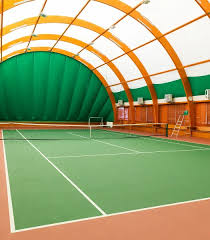Creating a high-quality sports facility requires careful planning and expert execution. From basketball courts to tennis courts and multi-use sports surfaces, proper sports court construction is key to ensuring safety, performance, and longevity. However, even the best-built courts need regular sports court maintenance to keep them in peak condition and extend their lifespan.
Understanding Sports Court Construction
Sports court construction involves multiple stages, each critical to delivering a durable, safe, and functional playing surface. acrylic flooring Whether it’s for a school, community center, private club, or residential property, the process generally includes:
- Site Evaluation and Preparation: Before construction begins, the site must be assessed for soil stability, drainage, and proper grading. Proper preparation helps avoid water pooling, cracking, and uneven surfaces.
- Base Layer Installation: A solid foundation of asphalt or concrete is laid to provide a stable, long-lasting base for the court surface. The quality and thickness of this layer impact durability and performance.
- Surface Application: Depending on the sport and budget, various surfaces are applied over the base—acrylic coatings, synthetic turf, modular tiles, or cushioned layers. These surfaces influence ball bounce, traction, and player comfort.
- Line Marking and Accessories: After the surface cures, professional-grade paint is used for court lines and boundaries. Installation of nets, hoops, fencing, and lighting may follow, completing the facility.
Why Quality Construction Matters
Investing in quality sports court construction prevents early deterioration and costly repairs. Proper materials, expert installation, and attention to drainage and leveling ensure the court withstands heavy use and weather challenges. A well-built court also enhances athlete safety by providing even traction and minimizing injury risks.
Essential Sports Court Maintenance
Once your sports court is built, consistent sports court maintenance is vital to preserving its condition and usability. Without regular upkeep, even the most durable courts can develop cracks, surface wear, and safety hazards.
Key maintenance practices include:
- Routine Cleaning: Sweeping or blowing away dirt, leaves, and debris prevents surface abrasion and clogging of drainage systems.
- Surface Washing: Periodic washing with water and mild detergents helps remove stains, algae, and mold, especially on outdoor courts.
- Crack and Damage Repairs: Small cracks should be sealed promptly to prevent water infiltration and further deterioration.
- Line Repainting: Keeping court markings crisp improves gameplay and safety, and should be done as needed.
- Drainage Management: Ensure gutters and drains remain clear to avoid standing water that can damage surfaces.
- Resurfacing: Depending on usage and wear, courts may need resurfacing every 4 to 8 years to restore texture and appearance.
Benefits of Proper Maintenance
- Extended Court Life: Regular maintenance delays the need for costly reconstruction or replacement.
- Enhanced Safety: A smooth, clean surface reduces the risk of slips and falls.
- Optimal Performance: Properly maintained courts offer consistent ball bounce and player traction.
- Aesthetic Appeal: Well-kept courts are visually inviting and reflect positively on facility management.
Choosing the Right Materials for Longevity
The choice of materials during construction impacts maintenance needs. For example, acrylic surfaces are durable and low maintenance, while clay courts require frequent grooming. Synthetic turf demands specialized upkeep but offers all-weather usability. Understanding these differences helps plan a maintenance schedule suited to your court’s surface.
Hiring Professional Services
Both sports court construction and maintenance require skilled professionals. Experienced contractors ensure that installation meets industry standards and that maintenance is done correctly to prevent damage. Many companies offer comprehensive packages including construction, resurfacing, repairs, and routine maintenance plans tailored to client needs.
Conclusion
Investing in expert and adhering to regular sports court maintenance schedules are fundamental steps to ensure a safe, functional, and attractive playing environment. sports court construction Whether you manage a school facility, sports club, or private court, understanding and implementing these practices protects your investment and promotes enjoyable gameplay for years to come.

